| |
|

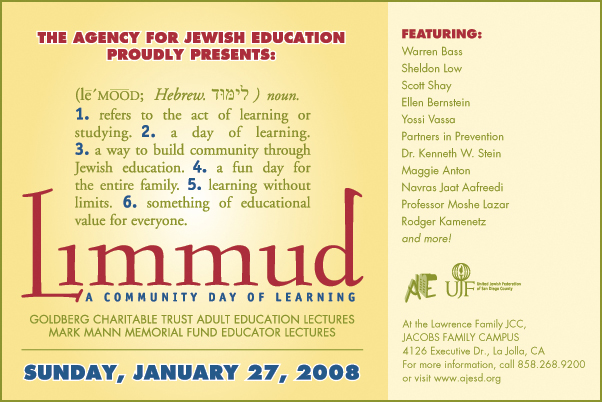
REVEREND MARTIN LUTHER KING'S BIRTHDAY
Former 'Freedom Rider' remembers MLK
By Congressman Bob Filner
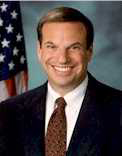 WASHINGTON, D.C.—Today, January 21, we celebrate Martin Luther King, Jr. Day and recognize his leadership and accomplishments for all Americans. The non-violent protest that he advocated led to boycotts, sit-ins, and marches, which changed our nation and helped create the liberties and equality that we enjoy today! WASHINGTON, D.C.—Today, January 21, we celebrate Martin Luther King, Jr. Day and recognize his leadership and accomplishments for all Americans. The non-violent protest that he advocated led to boycotts, sit-ins, and marches, which changed our nation and helped create the liberties and equality that we enjoy today!
I would like to share my personal experience as a tribute to Dr. King and to all Americans who believe in his cause. As a young teen, I was drawn early to the
Bob Filner
rousing speeches and inspiring writings of Dr. King. When I was a sophomore at Cornell University in May of 1961, studying for my final exams on a Sunday night, I saw a horrific picture on TV. It was a Greyhound Bus in Anniston, Alabama, set aflame as its riders were being taken out and beaten almost to death. This was the first Freedom Ride. Freedom Riders were an integrated group testing the laws of segregation in public facilities. I knew that a segregated America was an America that I did not want to live in and, at that moment, I knew that I needed to join the Freedom Riders. I saw them as a way to directly challenge racism and a key to overcoming prejudice.
The following day, I took my final exam and traveled to Nashville, Tennessee. There, I was trained in the practice of non-violent protest by the Student Non-Violent Coordinating Committee (SNCC). Among the trainees was a young black man named John Lewis.
John and I took separate buses, but we both ended up in Jackson, the capital of Mississippi. We were welcomed by a snarling mob and the police chief, who informed us that if we tried to sit-in at a segregated lunch counter, we would be immediately arrested for breach of peace and inciting a riot. We said that we believed we were covered by the Constitution. I was arrested and spent two months in the Mississippi State Penitentiary.
The Freedom Rides tested the laws of segregation. Our cases went to the Supreme Court, and the law segregating interstate facilities was found to be unconstitutional. The ruling changed the laws of official segregation. We changed America. It isn’t perfect, but we helped make it much better. Being able to participate at this level was remarkable – ordinary people with extraordinary leadership, taking part in historic struggles and making a difference. That is what the legacy of Dr. King means to me. Dr. King taught us that, in America, individuals had power and that, through activism, we could make a difference. Dr. King taught us that we could change America through political activism and political engagement.
Optimism about change has stuck with me. As bad a time as this is, we need to be optimistic about political change. The young man, John Lewis, who was jailed with me in Mississippi, went on to become the head of SNCC and, in 1965, led the march from Selma to Montgomery, Alabama, which led directly to the Voting Rights Acts. He was jailed and beaten dozens of times for our cause, but he has never stopped fighting. John has become Atlanta Congressman John Lewis, the Democratic Senior Chief Deputy Whip!
And, the General of the Mississippi National Guard who arrested us in Jackson was Sonny Montgomery. Sonny would later become Congressman Sonny Montgomery, Chairman of the House Veterans Affairs Committee, and a great defender of veterans’ rights.
Now think about this. There, in the summer of 1961, there were: John Lewis, a young black man, son of poor share-croppers in Alabama; Sonny Montgomery, a patrician segregationist; and Bob Filner a middle-class, New Yorker; in the same spot fighting over the same issue. Thirty years later, all three become Democratic Congressmen! This type of mobility and opportunity exists only in America. This is a metaphor for America today—we want an America in which citizens struggle to create a better society, where nobody settles for the status quo, and everybody has an opportunity to advance.
The hundreds of marches, boycotts, sit-ins and freedom rides led to passage of the Voting Rights Act in 1965. The cost was high: church burnings, bombings, shootings, beatings, and deaths. The Voting Rights Act provided extensive protections by prohibiting any voting practice that would abridge the right to vote on the basis of race and created many of the opportunities that we take advantage of today.
Thanks to the leadership of Dr. King, who inspired so many, today there are 77 members of Congress of African American, Latino, Asian, and Native American descent, and thousands of others in elected offices around the country. We must honor the legacy of all who died in the struggle for civil rights, and we must renew our commitment to remove obstacles to the right to vote.
The life of Martin Luther King, Jr. represents a vital building block in the history of the United States and the triumph of equality, freedom and human rights!

TU B'SHEVAT
Celebrating the perfection of a tree
By Sheila Orysiek
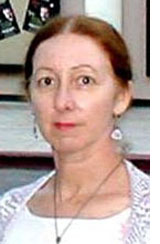 SAN DIEGO—G-D made many wonderful things, but silly human that I am, I think some are more wonderful than others. I make no excuses for the subjective nature of what follows….but…some things - in both form and function - are perfect. The symmetry of the curved lines of a swan, the flowing beauty of a horse, a shark slicing through water, a soaring eagle, a deer running through the forest, a cheetah on the hunt, a feather - are perfect. While certainly miracles of function and adaptation, other creations such as a bat, a cockroach or a hyena, don’t quite strike me as beautiful to look upon. Functional yes, beautiful - a subjective no. I repeat, this is a subjective personal conclusion (there’s probably some one out there who thinks cockroaches are beautiful). SAN DIEGO—G-D made many wonderful things, but silly human that I am, I think some are more wonderful than others. I make no excuses for the subjective nature of what follows….but…some things - in both form and function - are perfect. The symmetry of the curved lines of a swan, the flowing beauty of a horse, a shark slicing through water, a soaring eagle, a deer running through the forest, a cheetah on the hunt, a feather - are perfect. While certainly miracles of function and adaptation, other creations such as a bat, a cockroach or a hyena, don’t quite strike me as beautiful to look upon. Functional yes, beautiful - a subjective no. I repeat, this is a subjective personal conclusion (there’s probably some one out there who thinks cockroaches are beautiful).
Among the perfect creations, I would unhesitatingly include trees. I can’t
Sheila Orysiek
ever recall seeing an ugly tree. Even when bare, it only serves to reveal the elegant lines of the naked boughs. Trees are rather miraculous too. I can remember going to school on a spring morning in Philadelphia when the only signs of life were the tight little brown knobs on the bare branches, but when I returned home later that day, the spring sunshine had caused them to burst forth and pale green infant leaves shook out their wrinkles and turned brave faces upwards.
Those same leaves by summer were large - more than a hand span on the oaks and maples, dark green and giving shade and rest to weary creatures gasping in the humid heat. Lining both sides of the streets, arching over to blend branches, they became a cavern through which we walked and rode. And, then, in the fall the gray days were turned into fairy lands of color across hills and down city avenues; glorious golds and reds - autumn’s coat of many colors.
In the San Diego area because of the dry climate the trees are different. We have very few of the broadleaf varieties; instead slim slender Torrey pines, acacias, eucalyptus, palms, peppers, citrus, jacaranda and myrtles. Trees that need to sleep deeply through the winter don’t prosper here. Some have flowers, such as the pear, but don’t give edible fruit. It seems to me that while the trees grow as tall as on the East Coast, here they are trimmed more stringently which restricts their natural height. Californians seem to like to control the trees. Ironically the tallest and largest of trees are natives: the Giant Sequoia and the coastal redwood - but they are well north of San Diego and protected by law.
I have had many trees in my life; a beloved peach tree under which I grew from child to adolescent. A young Giant Sequoia growing rapidly alongside a cabin porch where I spent hundreds of hours reading, year after year, listening to the blue jays, the woodpeckers and watching the deer in Sequoia National Park.
In San Diego, I’ve owned two pepper trees; a male and a female. He (males are rather rare) has flowers, she had berries. She was regretfully sacrificed to a necessary house addition. I had to leave the house the day she was killed; I couldn’t bear her screams. The male looks lonelier now. A silver dollar eucalyptus grows in my garden and shades it, but unfortunately because of a crack in its trunk it has to be kept severely trimmed; however, that’s better than the alternative. It agrees with me, and we are still friends. The shamel ash in the front replaced a plagued elm; the ash and I are old buddies.
There are twenty-two other trees that I planted and which I enjoy though they don’t live with me; they reside at Lake Murray. When I first came to San Diego my eyes were used to the verdant green I had left behind in Philadelphia. Therefore, upon discovering a lake park near my home, I could identify the lake, but could not find a park. A park to me meant trees - this lake was surrounded by bare naked dusty scrubby hills and was a uniform color of baked beige clay.
I wanted to alter that. Belonging to a women’s club I raised funds, purchased trees and worked to persuade the city (which was unbelievably reluctant) to allow us to plant them. The city parks department finally decided only they could plant them - I agreed - gladly. Each small spindly twenty four inch baby pepper tree was placed in the hard clay ground and left to the forces of nature. I left the lake park that day and didn’t return for thirty years.
Life got busier for me; home, husband, child rearing. An avocation - dance - became a full time vocation. It consumed me physically and emotionally; Terpsichore is a jealous mistress and allows no half-time lovers. But time eventually conquers her and the dancer stops one way or another. My time came gradually and then suddenly and I found myself needing to reorient my life. Health challenges came that were unforeseen, and one day in the midst of turmoil I needed a place of outdoor space in which to replenish my spirit. It wasn’t a new need; I had sought such places ever since early childhood. I found it then in a grove of trees on an island in a stream - the perimeter of an urban golf course. It wasn’t a golf course to me; it was green space, solitude and sanctuary. Among my treasures are some stones I keep from that stream three thousand miles and a lifetime away.
So, now I sought such a place again and vaguely remembered the lake park I had visited thirty years before. It was a very hot day in San Diego - one of the few truly hot ones we get, usually in mid September. I parked the car in an empty lot facing the lake. No one was about; sane people were at home cocooned in air conditioning. Except for a paved parking lot and some picnic tables, the lake was much as I had left it decades before. I sat down at a table which was in the shade. The birds and water fowl were quiet in the heat. Not a cloud to be seen, light waves radiated upward from the absolutely still face of the lake. I just sat and relished the peace, grateful for the shade.
In gratitude I looked up at the tree providing that shade - how beautiful! What a wonder a tree is; a home for birds, giving fruit, providing succor from the sun, a perfection of G-D’s creation. I began to notice that the tree under which I sat was a pepper and there were a number of them scattered about with picnic tables strategically placed to take advantage of their protection. Well, I thought, how nice - someone planted these trees so that I could enjoy them. It was only very slowly that the dots came together. Pepper trees, all about the same age, and judging by their trunk size - approximately thirty years old. A lake, pepper trees, twenty two of them…..and then it burst upon me - I had planted these trees!
They had grown and waited for me to return and now when I needed them, they were ready and able to help. Planting a tree is an investment in the future. I hope that as the years go by, long after I am gone, many people will sit under these trees, happy with family picnics, enjoying the shade - the green canopy giving rest to city tired eyes.
Plant a tree for the future - you may need it someday. Celebrate Tu B’Shevat tomorrow, January 22—The Talmud's official birthday for trees.
Orysiek is a freelance writer and dance critic based in San Diego

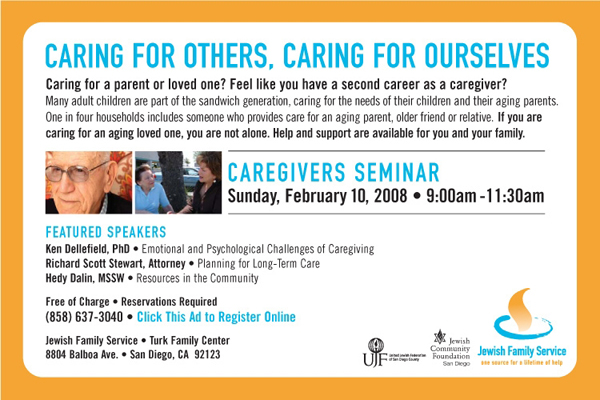

PEOPLES OF THE BOOK
Book chronicles Jewish mother stereotype
You Never Write, You Never Call: A History of the Jewish Mother by Joyce Antler, Oxford University Press, 2007, 321 pages, $24.95.
By Gail Feinstein Forman
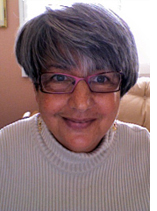 SAN DIEGO—The Jewish Mother is alive and well, says Joyce Antler, author of You Never Write, You Never Call: A History of the Jewish Mother. Antler offers an insightful rendering of the sociological, religious, and cultural Jewish traditions that have led to the negative stereotype of the overbearing, self-sacrificing Jewish Mother. She also demonstrates with wit and humorous anecdotes the variety of ways the entertainment world has perpetuated this image. SAN DIEGO—The Jewish Mother is alive and well, says Joyce Antler, author of You Never Write, You Never Call: A History of the Jewish Mother. Antler offers an insightful rendering of the sociological, religious, and cultural Jewish traditions that have led to the negative stereotype of the overbearing, self-sacrificing Jewish Mother. She also demonstrates with wit and humorous anecdotes the variety of ways the entertainment world has perpetuated this image.
Throughout Jewish history, mothers have been held in high esteem. The “Woman of Valor” is praised every week on Shabbat emphasizing her devotion to the family, her role of preserving their Jewish roots through ritual and culturally prescribed behavior. In this “shetl family,’ the mother
Gail Feinstein Forman
rules the domestic roost while the husband goes to study or earn what he can to make a living.
As more than two million Jewish immigrants immigrated to the US at the turn of the last century, this image of the strong, loving matriarch in charge of domestic life persisted. With few financial resources, these immigrant mothers devoted all their time to the family and helping them succeed in the new world.
Songs like the popular “My Yiddishe Mama,” praising her self-sacrifice and unending love helped mythologize this image with melancholic lyrics that describes a Jewish mother as , ---“Bent over from great sorrow with a pure Jewish heart/ And cried out eyes.” Even in poverty, “ there was enough for the children” because she “used to voluntarily give us bread from her mouth.”
As an example of this, my father, a second generation Jew, nostalgically related the story of his mother’s financial inventiveness by sending him to the grocery store to buy a “broken egg,” a cheaper variety than an unbroken one. And that night, a newly baked cake containing a “broken”egg appeared on the dinner table.
But while the Jewish mother was receiving praise in her role in the family, as an immigrant with few job skills, the men in immigrant families were losing their clout. Many men of this time were only able to make a small salary in unskilled jobs or jobs in sweatshops with very little pay.
So the Jewish mother stepped up and with her resourcefulness, took in boarders or piece work to make ends meet and keep the family together, taking on more responsibility for the family’s survival. Besides creating conflicts between husband and wife, it also created an intergenerational family conflict with questions about how best to live a Jewish life in America.
As a respite from the difficulties of city and family life at this time, vacations to the Borscht Belt in upstate New York offered a relaxing and completely Jewish environment. Comedians tried out different routines and found that the negative image of the “monster” Jewish mother brought laughs. The author suggests that by mocking this image, the comedians themselves were trying to free themselves from this overarching relationship with their own mothers.
Antler further suggests that the Jewish mother became the scapegoat for the ambivalence toward acculturation in postwar America, and as Jews became more comfortable in American life, the derogatory image of the Jewish mother began to recede. In today’s period of modernity, the media image of the Jewish Mother is alive and well, and according to Antler, evolving in many positive directions.
After reading Antler’s book, you’ll come away with a raised consciousness of how the previous century’s popular Jewish humor poignantly mirrored the place of Jews in American society. And along the way, you’ll learn a few more Jewish jokes!
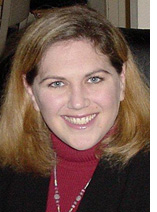 LA JOLLA, California—Although my children attend an Orthodox Jewish day school and pre-school, at home we are very secular. With all the observant Jews around me at Soille San Diego Hebrew Day School, and my kosher/ Shomer Shabbos brother-in-law from Israel staying with us, I had almost begun to feel that I might not be very Jewish. LA JOLLA, California—Although my children attend an Orthodox Jewish day school and pre-school, at home we are very secular. With all the observant Jews around me at Soille San Diego Hebrew Day School, and my kosher/ Shomer Shabbos brother-in-law from Israel staying with us, I had almost begun to feel that I might not be very Jewish.
Not so, according to Jewtopia writers and actors Bryan Fogel and Sam Wolfson.
On Saturday night, my friend and fellow SSDHDS parent Shiri Puhovitsky and I went to see a presentation at the Lawrence Family JCC called The World of Jewtopia. We thought it was going to be the play Jewtopia itself, but it turned out
Sandi Masori
to be an equally enjoyable evening of stand-up comedy and excerpts from the book of a similar name.
Fogel and Wolfson, who are anxiously waiting for the writers’ strike to end to start production on the movie, led us through a funny series of accurate stereotypes that showed me once and for all that whether or not I go to shul on the High Holidays, I am definitely a Jew.
They had a lively discussion on how to pick the perfect table in a restaurant. They put up a graphic of a restaurant with 12 tables, and one by one, they led the sold-out house to call out what was wrong with each table. One was too close to the bathroom, another too close to the kitchen, another too drafty, too small, etcetera. Finally they got to the two tables outside on the patio. “What's wrong with these?” “They're outside” the crowd enthusiastically shot back. “That's right,” they said, “and no Jew would sit outside.”
Shiri and I had to giggle at that because prior to the show, we had had dinner nearby at PF Chang's and did in fact have to sit outside, under a broken heat lamp, no less.
I also laughed about the whole picking and changing tables business as I am a little infamous for switching the table from the one that I'm originally offered.
In fact, that very morning, Shor, Sky and I met our friends Tayo (a fellow first-grader of Shor's) and his mom Denise at DZ Akins. They arrived before we did and before the rush. They had been seated at a small booth in the back. I could see from the moment that I walked in that with the two big kids along with Denise, myself and 10-month Sky, who grabs everything in arm's reach, this table was way too small. Not wanting to make waves, we sat anyway.
Then we got the menu. I was upset and dismayed to find that the only two options on the children's menu for breakfast both included bacon or sausage. No substitutions. I found it really upsetting that a restaurant that built its name on its Jewish connection would force Jewish children’s parents to pay extra for them not to eat pork.
When I pleaded to have even applesauce instead of pork, I was reminded that the restaurant isn't kosher. Well, neither am I, but we don't eat pork.
After the show, a friend of Shiri's commented that being very particular about what you order in the restaurant and what's on the side, or subbed for something else, are also very Jewish traits.
The World of Jewtopia enlightened us that my dismay was part of a long tradition of genetic encoding that went back as far as Moses, who, according to Fogel and Wolfson, was cranky and constipated from all the matzah.
Another topic of “Jewtopia” discussion was “what's that in your freezer?” As soon as a stuffed freezer graphic went up, I leaned over and whispered to Shiri, “it's like my mom's second freezer-- anytime we have cake at my mom's house, we always ask whose wedding it's left over from...”
No sooner were those words out of my mouth, than the little red laser point went to something covered in foil and in a bag and we were informed that it was the top of grandma and grandpa's wedding cake. A big ripple of laughter went through the audience as countless others found themselves or family members accurately satirized.
Other topics like being afraid of germs, how to disinfect the hotel room, and how Jewish boys like Asian women didn't seem to really apply to me, but then I realized the genes were still out there; my germ-conscious brother fits the image. David is married to Hui-Wen, a new U.S. citizen from Taiwan, so there, we must be Jewish.
Another comic bit focused on the “Jewish Kama Sutra,”—just how do you get into that Challah position? Others involved proof that Jews have been instrumental throughout world history, and that Hollywood was obviously created by Jews. This is obvious if you consider the Jewish subplots in nearly every TV show and movie out there, as exemplified by ET. That was about the alien who spent the whole movie trying to phone home, and what's more Jewish than that?
The whole presentation was well done and Fogel and Wolfson had the multi generational crowd giggling, laughing and calling out. They localized some of the humor to fit the crowd. In one segment they mentioned Melissa Bartell, president of the San Diego Center for Jewish Culture, which presented the evening. In another bit they referenced how the most popular Jew of all time is alive and well and working in La Jolla. Yeah, they said, showing a picture of a man with a long beard and hair mowing a lawn, he goes by “Hay-sus” now.
Shiri reported that after the show, the talk in the ladies room vacillated between surprise that it wasn't the full play, and people finding themselves and their families in the “stereotypes” presented in the show.
In general I would say that a good time was had by all. Although I don't think that my Yemeni Israeli in-laws would necessarily find identification in the stereotypes, the generalizations certainly fit many of us Ashkenazim. It led me to conclude that, practicing or not, I'm definitely a Jew.
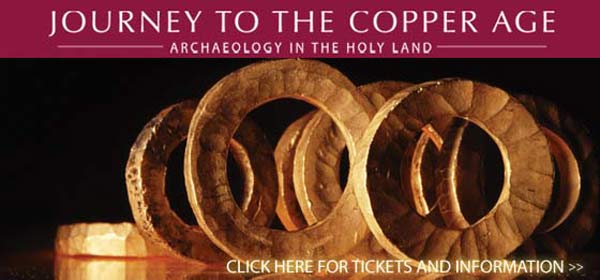

.
SAN DIEGO JEWISH WORLD THE WEEK IN REVIEW
Gerry Greber in La Jolla, California: A harrowing tale of death, survival at sea
Rabbi Baruch Lederman in San Diego: The mousetrap and the farm animals
Rabbi Leonard Rosenthal in San Diego: The modern meaning for Tu B'Shevat
Ira Sharkansky in Jerusalem: Fatah to end ceasefire. Are they kidding?
Carol Davis in San Diego: Globe scores 'KO' with In This Corner
Donald H. Harrison in San Diego: Half Russian story explores love and dance
Sheila Orysiek in San Diego: Autobiography of a blue checkered shirt
Norman Greene in San Diego: 2 mothers experience tragedy, resilience
Donald H. Harrison in San Diego: Speakers at citizenship ceremony glamorize U.S. history; gloss over mistakes of the past Reader reaction
Fred Reiss in Winchester, California: The clash of science and fundamentalism
Sheila Clapkin in Tarzana, California: Pilgrimage to Uman: Searching for absolution at Rabbi Nachman's grave
Donald H. Harrison in San Diego: Making Trouble will make you laugh
(Vol, 2, No. 13)
Donald H. Harrison in San Diego: The Jewish Americans: 3-part PBS series offers 'history commenting on history'
Alexa Katz in San Diego: Into the Wild: A movie that delivers its title
Gaby Maio in San Diego: A ride into San Diego Jewish history
David Strom in San Diego: PTSD also affected survivors of the Shoah
< BACK TO TOP
|
|

